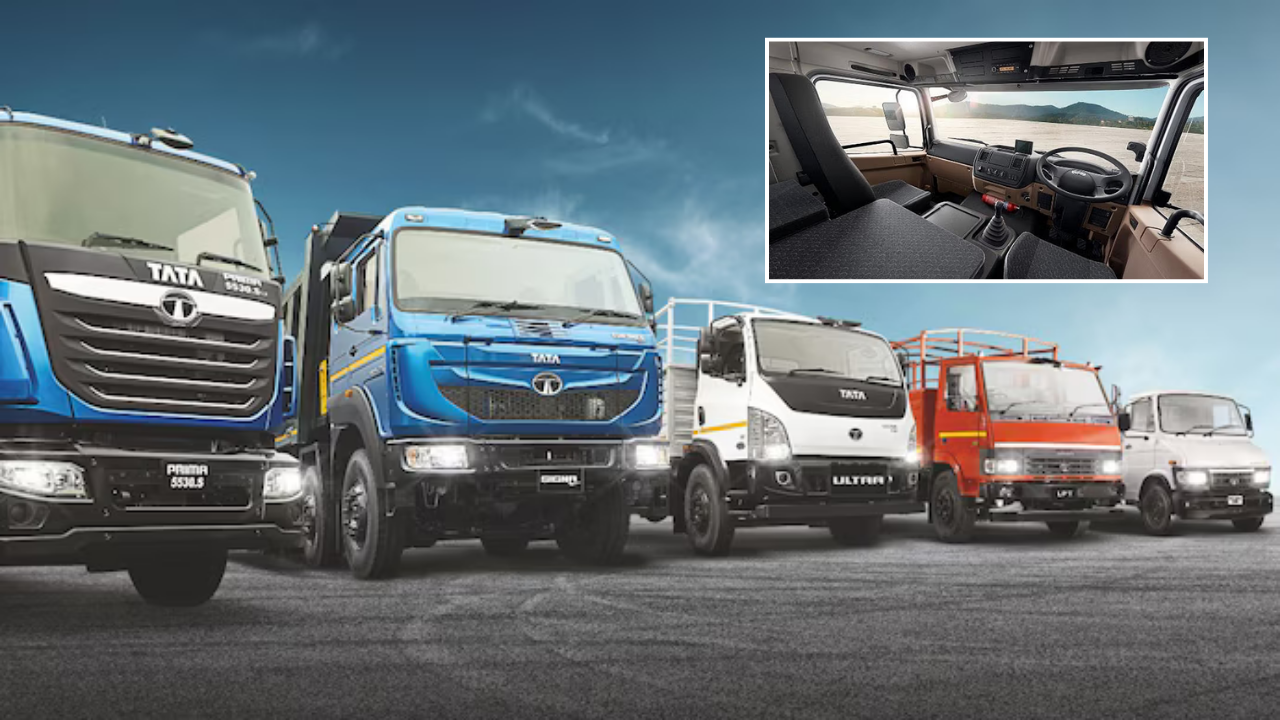Tata Motors has finally done what truck drivers across India have been hoping for—rolled out factory-fitted air conditioning across its complete truck portfolio. It’s a game-changer that promises to make those scorching highway journeys a bit more bearable for the folks who keep our economy moving.
This isn’t just about one or two models getting the AC treatment. We’re talking about every single cabin type in Tata’s truck lineup, from the nimble SFC models that dart through city traffic to the mighty Prima range that hauls massive loads across state borders. And here’s the kicker—even the cowl models are getting in on the action, which is honestly about time.
Design and Exterior Updates
Look, Tata hasn’t gone overboard with flashy design changes here, and that’s probably for the best. These are working vehicles, after all. The company has smartly kept the rugged, no-nonsense look that truckers actually prefer while making sure the new AC systems don’t stick out like a sore thumb.
What’s really clever is how they’ve handled the cowl models. These workhorses traditionally came bare-bones—no factory AC, just the basics. Now they look as professional as their fancier siblings, which means no more dodgy aftermarket AC jobs that often end up looking like an afterthought.
Interior and Comfort Features
The AC isn’t just your typical on-off affair. Tata’s gone with a dual-mode setup—Eco and Heavy—which is pretty smart when you think about it. Drivers can dial down the cooling when fuel costs are pinching, or crank it up when the mercury’s hitting 45 degrees in Rajasthan.
But here’s what caught my attention: they’ve actually listened to what drivers have been saying. Better seats, improved ergonomics, and proper cabin insulation. It’s the kind of stuff that sounds boring in a boardroom but makes all the difference when you’re doing a Delhi-Chennai run in peak summer.
Read Also: Tata EVs Get Massive June Discounts: Up To Rs 1 Lakh Off
Performance and Engine Upgrades
Now, while they were at it, Tata decided to bump up the power game too. The heavy trucks, tippers, and prime movers are now pushing out 320 horses, which is a decent jump from before. But it’s not just about bragging rights at the truck stop—these engines are designed to be smarter about fuel consumption.
The automatic engine idle shut-off is a neat touch. How many times have we seen trucks idling away at dhabas, burning diesel for no good reason? This feature should help cut down on that wastage. Plus, there’s this voice messaging system that keeps drivers in the loop about what’s happening under the hood—pretty handy when you’re focused on navigating through Bangalore traffic.
Technology and Connectivity
Tata’s Fleet Edge platform has been around for a while now, and it’s genuinely useful stuff. Fleet operators can track everything from maintenance schedules to fuel efficiency, which helps keep costs in check. The voice alert system is a nice addition—sometimes a gentle reminder is better than staring at dashboard lights.
The anti-fuel theft system is particularly relevant given how common diesel pilferage has become. It’s one of those features that might not grab headlines but can save operators serious money over time.
Safety Enhancements
Here’s where things get interesting. Tata’s introduced India’s first ADAS for commercial vehicles, and it’s not just marketing fluff. We’re talking collision mitigation, lane departure warnings, driver monitoring—the works.
Honestly, given how chaotic Indian highways can get, especially during festival seasons, these systems could prevent some serious accidents. The driver monitoring bit is particularly clever—it can tell when someone’s getting drowsy during those long night drives.
Market Impact and Pricing
Tata’s being coy about exact pricing, but they’re promising that the total cost of ownership won’t go through the roof. With their massive service network—over 3,000 touchpoints—at least getting these systems serviced shouldn’t be a nightmare.
This move puts serious pressure on Ashok Leyland, Mahindra, and the other players. Factory-fitted AC is becoming table stakes now, and nobody wants to be the brand that still makes drivers sweat it out in 2025.
Rajesh Kaul from Tata Motors mentioned that all these upgrades came from actually talking to customers, which sounds obvious but isn’t always how things work in the automotive world. Sometimes the best innovations come from simply asking drivers what they actually need.
